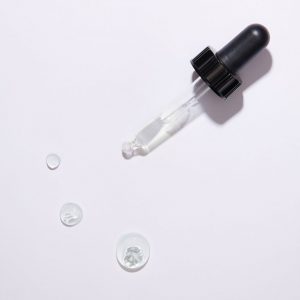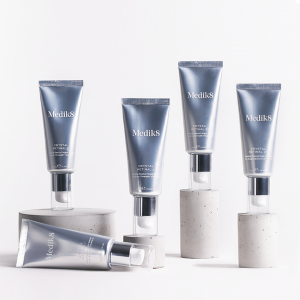News - December 13th 2023
Why I wish I’d known about Retinol in my 30’s……
You might not have noticed any fine lines as yet but want to up your anti-aging game, or maybe, like me, you actually have signs of aging but don’t like the thought of chemical peels and botox (yet…..). Either way retinol could be for you……

I’m a new convert to retinol but if I had known about its benefits 10 years ago I definitely would have added it to my preventative skin care arsenal.
My skin care routine has always been relatively good. Ok I’ve never followed the three-step cleanse, tone and moisturise sequence, but I thought I had it well managed. A good cleanse and moisturise, twice a day with maybe a bi-weekly exfoliation or mask. I’m now early 40’s (or as my husband just reminded me…. slightly closer to mid-40’s) with average skin for my age. Fine lines around my eye area and some deeper channels (a.k.a beasts) in my frown lines and let me not forget the occasional hormonal acne outbreak.
Retinol had started appearing more regularly in product ingredients lists but I was worried about the myths surrounding its use. I had heard that it thins your skin and that your skin can become red, flaky and irritated, so didn’t felt confident enough to try it.
After a particularly horrible hormonal breakout, I had to try something new so I started reading more about retinol. I realised that whilst there is some truth to the myths, it wasn’t as scary as I had first thought.
Yes, Retinol does thin the topmost layer of our skin by weakening the bonds between our dead skin cells, encouraging them to break away. Deeper skin layers are benefitting from increased collagen production, which actually plumps our skin! Yes, retinol might cause redness or irritation, but with correct usage this is kept to a minimum.
Since I plucked up the courage and started to use retinol, my monthly breakout has dramatically improved and I have noticed a real difference in the texture of my skin.
So what is retinol?
Retinol is a form of vitamin A. It is part of a family of products called retinoids and remains one of the only scientifically proven anti-aging ingredients.
Retinoids range from high strength prescription only derivatives (like Tretinoin) to low potency products you can buy on most high streets. Retinol is the most commonly used member of the family for non-prescription shop bought skin care.
Who should be using retinol?
Most people can benefit from retinol use, from those in their late 20’s to help combat the early signs of aging, right up to mature skins that have deeper wrinkles and pigmentation.
Are there different types of retinol?
Yes, there are different type of retinol, which all need to convert into different stages before becoming active for our skin to use. There are differing strengths within each type of retinol.
- Retinyl Esters – Usually the least potent and better for new users or those with sensitive skin. You might also see these on ingredients labels listed as retinyl palmitae, retinyl linoleate, retinyl acetate or retinyl propionate. Retinyl Esters will need to take the greatest number of steps before becoming active (converting from a retinyl esters to retinol to retinal and then to retinoic acid)
- Retinol – This is most commonly seen in over-the-counter products, taking two steps to convert to the active form (retinol to retinal to retinoic acid)
- Retinal – the most potent over the counter form of retinol, only taking one step to convert.
- Retinoic Acid – available in prescription form only (such as tretinoin).
Which Strength should I be using?
Retinol comes in varying different strengths. When you first add it to your routine you can expect some redness and irritation. This can be kept to a minimum by starting with a lower percentage formulation and building up to a higher strength gradually. Each strength should be used two to three times per week for a few weeks (or until each product has been used up) before moving onto the next strength. Expect to use retinol for up to 12 weeks before seeing results.
Should I opt for a retinol serum or cream?
That all depends. If you have dry skin, opt for a more moisturising cream. If you have oily skin, opt for a serum which can be lighter and less congesting.
Where does retinol fit into your skin care regime?
Start by introducing retinol into your evening routine. Cleanse, apply your retinol product, followed by moisturiser. Once your skin becomes accustomed to using retinol you can add it to your morning routine, making sure that you follow up with an SPF. (SPFs should be used every day year-round anyway, but it’s even more important whilst using retinol)

When to stop using Retinol?
- If you experience anything other than slightly red, dry skin, stop using and consider other anti-aging products.
- If you become pregnant or are breast feeding, stop using retinol. There are some retinol alternatives that you could consider, such as bakuchiol containing products.
- You will need to stop using retinol prior to some beauty and aesthetic treatments. Always speak to your therapist when booking your treatment to check.
How much should I expect to pay?
You might think that such a proven anti-aging product demands a higher price? Luckily for us, this isn’t true. Many high street brands now have ranges including Retinol which suit any budget.
Talk to your local beauty therapist if you have any questions or concerns about your skin care routine.